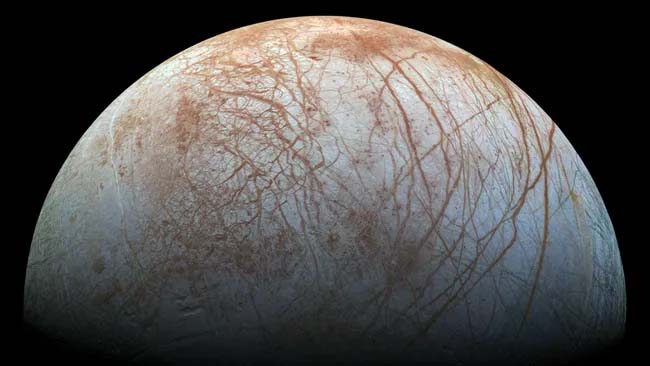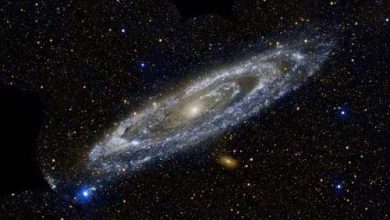NASA: The probe is finally heading to Jupiter’s icy ocean moon

Science: NASA’s Europa Clipper probe is finally heading to Jupiter’s icy ocean moon, but it will take a while to get there — about six years. Fortunately, we won’t have to wait that long to see Europa up close. NASA recently updated Europa Trek, a web portal that gives users the ability to “fly” over the surface of Europa, with a guided tour to show and explain some of the moon’s geological features. The map includes images collected by Europa Clipper’s predecessors — Voyager 2, Galileo and Juno, NASA spacecraft that have flown over the moon.
The guided tour takes you through the fascinating geological features of Europa, a moon with an icy crust atop a vast ocean that’s thought to have a volume of twice the total volume of Earth’s oceans.
As you fly over the surface, immediately you see long, dark lines crossing the moon; these are called lineae. “One possible explanation for these features is that these are actually cracks in Europa’s crust. Active cracks open and close with Europa’s tidal tilt as it orbits Jupiter,” NASA officials wrote on the Europa Trek tour. Impact craters are less obvious. Interestingly, there are only a few on Europa’s surface. Planetary scientists estimate the age of a celestial body’s surface by the number of impact craters present on it; older surfaces have had more time for impacts to accumulate.
“The lack of craters on Europa indicates that we are looking at a fresh, young surface on a geologically active world,” NASA officials wrote. Although Europa is thought to be about 4.5 billion years old, its surface is probably only 20 million to 180 million years old, constantly being renewed by geological activity.





